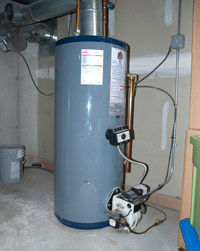How do you feel on the subject of Tips on Maintaining a Water Heater?

Warm water is crucial for everyday convenience, whether it's for a revitalizing shower or washing recipes. To ensure your warm water system runs successfully and lasts much longer, normal maintenance is vital. This article supplies practical tips and understandings on exactly how to preserve your home's hot water system to stay clear of disturbances and pricey fixings.
Introduction
Keeping your home's warm water system may seem difficult, however with a few simple actions, you can guarantee it runs smoothly for several years to find. This guide covers everything from understanding your warm water system to do it yourself maintenance tips and understanding when to employ expert aid.
Relevance of Preserving Your Hot Water System
Regular upkeep not only prolongs the life-span of your warm water system but also guarantees it operates efficiently. Ignoring maintenance can bring about reduced performance, higher power expenses, and even early failing of the system.
Signs Your Warm Water System Requirements Upkeep
Understanding when your warm water system requires attention can protect against major issues. Look out for indications such as inconsistent water temperature level, unusual noises from the heater, or rustic water.
Comprehending Your Hot Water System
Prior to diving right into upkeep tasks, it's helpful to recognize the fundamental elements of your hot water system. Commonly, this consists of the water heater itself, pipelines, anode rods, and temperature controls.
Monthly Upkeep Tasks
Routine monthly checks can help capture minor issues prior to they escalate.
Purging the Water Heater
Purging your water heater gets rid of sediment build-up, enhancing effectiveness and lengthening its life.
Monitoring and Replacing Anode Rods
Anode poles prevent rust inside the container. Examining and changing them when worn out is vital.
Inspecting and Changing Temperature Level Setups
Readjusting the temperature level setups ensures optimal performance and security.
Do It Yourself Tips for Maintenance
You can do numerous maintenance tasks on your own to maintain your hot water system in top problem.
Looking for Leaks
Frequently check pipelines and links for leakages, as these can result in water damages and greater bills.
Evaluating Stress Alleviation Valves
Examining the pressure safety valve guarantees it works appropriately and stops too much pressure accumulation.
Shielding Pipes
Insulating hot water pipes reduces warmth loss and can conserve power.
When to Call a Professional
While DIY upkeep is beneficial, some issues require professional proficiency.
Facility Concerns Calling For Expert Assistance
Instances consist of significant leakages, electrical issues, or if your water heater is consistently underperforming.
Regular Expert Maintenance Advantages
Professional maintenance can consist of comprehensive examinations, tune-ups, and making sure compliance with safety criteria.
Verdict
Routine upkeep of your home's warm water system is crucial for effectiveness, long life, and expense savings. By complying with these tips and recognizing when to look for expert aid, you can ensure a trustworthy supply of warm water without unforeseen disturbances.
How to Maintain an Instant Hot Water Heater
Before tinkering with your hot water heater, make sure that it’s not powered on. You also have to turn off the main circuit breaker and shut off the main gas line to prevent accidents. Also turn off the water valves connected to your unit to prevent water from flowing into and out of the appliance. 2. When you’re done, you have to detach the purge valves’ caps. These look like the letter “T” and are situated on either side of the water valves. Doing so will release any pressure that has accumulated inside the valves while at the same time avoid hot water from shooting out and burning your skin. 3. When the purge valves’ caps are removed, you have to connect your hosing lines to the valves. Your unit should have come with three hoses but if it didn’t, you can purchase these things from any hardware or home repair shops. You can also get them from retail stores that sell water heating systems. Read the user’s manual and follow it to complete this task properly. When the hosing lines are connected, open the purge port’s valves. 4. You should never use harsh chemical cleaners or solutions when cleaning your unit. Make use of white vinegar instead. It should be undiluted and you’ll probably use about 2 gallons. 5. Now flush your water heater. This task should probably take about 40 minutes. We can’t give you specific directions for this because the procedure is carried out depending on the type, model and brand of your heater. With that being said, refer to the user’s manual. 6. When you’re done draining the unit, you have to turn off the purge port valves again. Remove the hosing lines that you earlier installed on each of the water valves. Put the valve caps (purge port) back in their respective places and be very careful so as not to damage the rubber discs that are found inside these caps. 7. Now that everything’s back in place, check your user’s manual again to find out how to reactivate your water heating system. 8. Once it is working, turn one of your hot water faucets on just to let air pass through the heater’s water supply pipes. Leave the tap on until water flows smoothly out of it. https://www.orrplumbing.com/blog/2014/september/how-to-maintain-an-instant-hot-water-heater/

I was shown that editorial on What Kind of Maintenance Do Water Heaters Need? from a good friend on a different website. Sharing is nice. Helping others is fun. Bless you for being here. Come back soon.
Give Me A Quote!